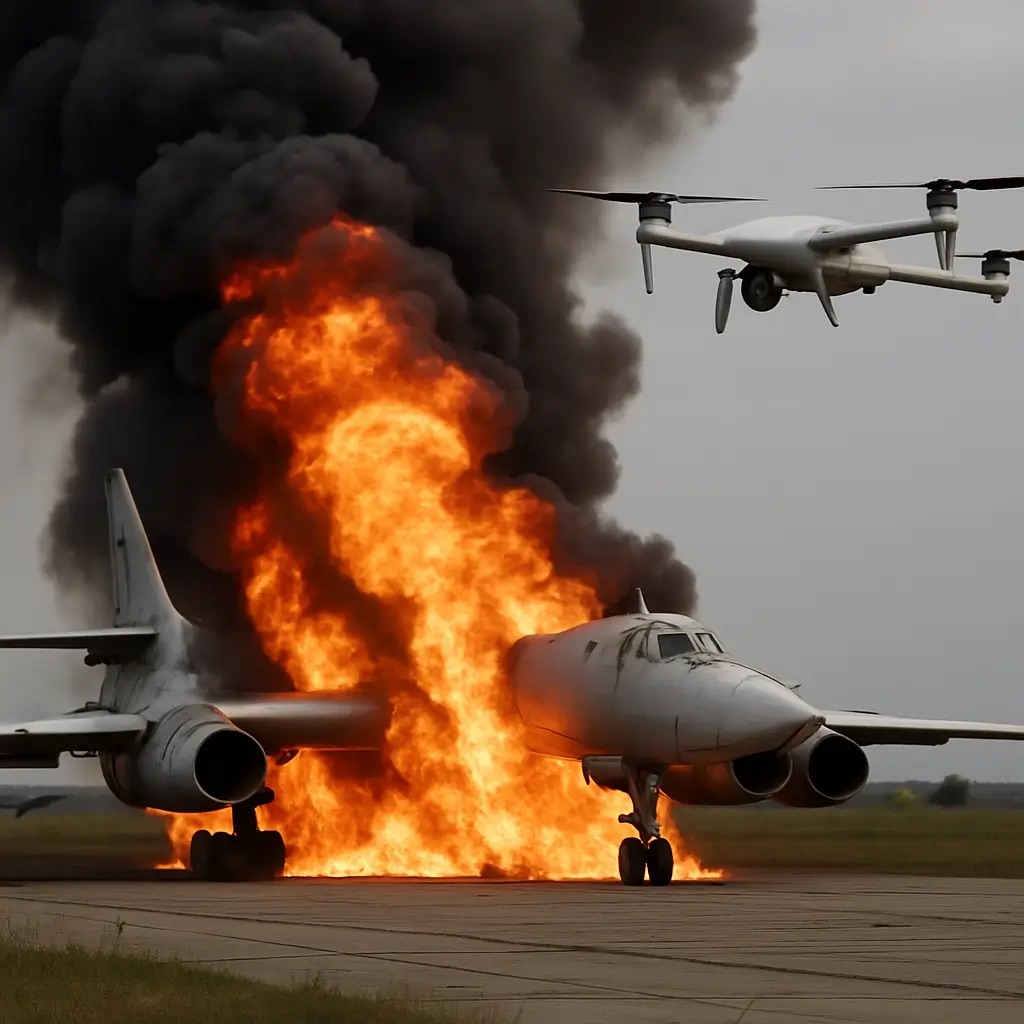Introduction
In a bold and unprecedented move, Ukraine has executed a covert drone operation targeting Russian airbases, causing significant damage to strategic bombers. Dubbed “Operation Spider’s Web,” this mission underscores Ukraine’s evolving military tactics and sends a clear message to both Russia and the international community.
Operation Spider’s Web: A Strategic Masterstroke
Operation Spider’s Web was a remarkable display of Ukraine’s evolving military capabilities and long-term strategic thinking. The operation, believed to have been 18 months in the making, was aimed at striking deep inside Russian territory without the need for manned aircraft or traditional missile systems. Instead, it relied entirely on small, stealthy drones that could evade radar detection and fly under the radar—both literally and figuratively.
To carry out this mission, Ukraine is reported to have smuggled numerous drones into Russia, using freight trucks as the perfect cover. These drones were not launched from Ukraine itself but instead from at least four locations within Russia, thousands of kilometers apart. This decentralized approach ensured confusion within Russian defense systems and made it nearly impossible to trace all points of origin at once. By launching from within Russian borders, Ukraine bypassed most of the early-warning systems that would have detected a cross-border strike, giving the drones the element of surprise.
The primary targets were strategic Russian airbases housing long-range bombers such as the Tu-95, Tu-22, and Tu-160. These aircraft are central to Russia’s capability to launch large-scale missile attacks, including cruise missiles. Damaging or disabling these bombers directly impacts Russia’s ability to carry out long-distance air strikes—especially on Ukrainian infrastructure. Ukrainian sources claim that around 40 of the estimated 120 operational strategic bombers were either damaged or rendered inoperable as a result of these precision strikes.
What makes Operation Spider’s Web particularly significant is not just the physical damage it caused, but the psychological and symbolic weight it carries. It sent a powerful message to the Kremlin and the wider world: Ukraine is capable of precision operations deep inside enemy territory, using technology and ingenuity rather than sheer firepower. This shift in tactics reflects Ukraine’s growing ability to wage modern, asymmetric warfare—one that levels the playing field despite being the militarily smaller side.
Moreover, the bombers targeted in this operation are Soviet-era aircraft. Russia no longer manufactures these models, and replacing or repairing them is extremely difficult due to parts shortages and outdated technology. The loss of even a handful of these aircraft represents a substantial and long-lasting setback for Russia’s strategic air force. It is a blow not just to its hardware, but to its strategic reach.
This operation also likely involved months of intelligence gathering, technological testing, and coordination across various Ukrainian agencies. It required not just drones and launch equipment, but people on the ground inside Russia who could receive, hide, and deploy the drones without detection. This points to an expansive and deeply embedded intelligence network, another sign of Ukraine’s increasingly sophisticated approach to warfare.
From a human perspective, the story of Operation Spider’s Web is one of resilience, innovation, and an unrelenting will to defend a country under siege. Ukraine’s approach is not simply about retaliation but about rewriting the rules of conflict—leveraging intelligence, strategy, and technology to level a battlefield that has historically favored brute force. It marks a new chapter in how modern wars can be fought and possibly won: not just with weapons, but with vision and calculated risk.
Implications for Russia’s Military Capabilities
Challenges in Replenishment
Military analysts highlight that the bombers in question are no longer in production, making their replacement a daunting task for Russia. The damage inflicted could severely hamper Russia’s ability to conduct long-range missions in the near future.
Psychological and Strategic Impact
Beyond the physical damage, the operation serves as a psychological blow to Russia, showcasing Ukraine’s capability to execute deep strikes within Russian territory. It also signals to the West Ukraine’s determination and evolving military sophistication.
Conclusion
Ukraine’s audacious drone strikes represent a significant escalation in its defense strategy, reflecting both ingenuity and resolve. As the conflict continues, such operations may redefine the dynamics on the ground and influence international perceptions and support.

